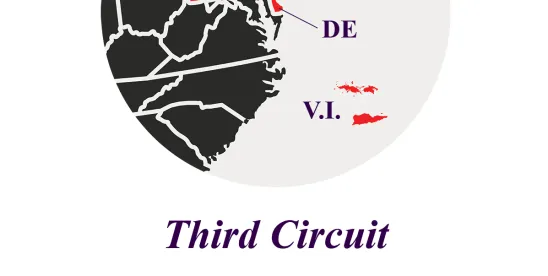The decision again warns sellers of intellectual property to improve and strengthen their positions and improve their creditor status or be at risk in the event of a bankruptcy of the contract counterparty. The decision emanates from the first bankruptcy case of Mallinckrodt PLC and its affiliated debtors (collectively, Mallinckrodt) and affirms the rulings reached by the bankruptcy court and district court. In its opinion, the Third Circuit held that future royalty obligations arising from a prepetition contract can be discharged in bankruptcy and cautions what steps a counterparty can take to prevent such an outcome and thus minimize its risks.
Background
In 2001, Mallinckrodt purchased a prescription medication called Acthar Gel from pharmaceutical company Sanofi-Aventis. Pursuant to the purchase agreement, Mallinckrodt paid Sanofi $100,000 up front with the promise of an annual royalty payment to Sanofi equal to 1% of all net sales over $10 million, payable in perpetuity.
Mallinckrodt’s decision to purchase Acthar Gel proved prescient, as annual sales grew to nearly $1 billion in the year prior to the commencement of the bankruptcy case (which was precipitated by Mallinckrodt’s onerous opioid liabilities). Mallinckrodt later filed bankruptcy in October 2020. Once in bankruptcy, and nearly 20 years after executing the purchase agreement, Mallinckrodt proposed a plan that would relieve the company of its royalty obligations under the purchase agreement and leave Sanofi with an unsecured, contingent claim for future, unpaid royalties which would be subject to discharge upon confirmation of the plan. In other words, the royalty payments Sanofi had bargained for would evaporate.
Ahead of the confirmation hearing, Sanofi filed a motion seeking (among other things) a determination by the bankruptcy court that Mallinckrodt’s obligations to pay royalties could not be discharged. On November 8, 2021, the bankruptcy court held that Mallinckrodt’s future royalty obligations to Sanofi were prepetition claims and therefore dischargeable, a decision later affirmed by the district court on December 20, 2022.
Before the Third Circuit
On appeal, Sanofi argued that Mallinckrodt’s royalty obligations did not constitute a “claim” as that term is understood in the bankruptcy context and therefore could not be discharged. Sanofi first argued that future royalties are too indefinite to be a claim because the amount of payment varies greatly from year to year and there is no way of knowing in advance how much royalties will be; if the royalty obligations are not claims, then they cannot be discharged.
The court quickly dispensed with this argument, recognizing that the Bankruptcy Code explicitly treats such future obligations as dischargeable claims. The court noted that Section 1141(d)(1)(A) of the Bankruptcy Code provides that a plan of reorganization “discharges the debtor from any debt that arose before the date of such confirmation.” Section 101(12) defines “debt” to mean a “liability on a claim.” In turn, Section 101(5) broadly defines the term “claim” to include a “right to payment” that is “contingent” and “unliquidated.” The court recognized that the royalty obligations fell squarely into the Bankruptcy Code’s definition of “claim” because the obligation to make royalty payments was contingent on future sales and the value of such payments were presently unknown (i.e., unliquidated). By falling into the definition of “claim,” the royalty payments were therefore dischargeable.
Sanofi next presented its second argument, highlighting the language in Section 1141(d)(1)(A) that a plan can only discharge claims that arose prior to confirmation. Sanofi argued that that its claims had not yet arisen because they are triggered only upon the satisfaction of annual sales metrics.
In overruling this argument, the court noted that a claim can arise before it is triggered. The court recognized that in contracts, parties often negotiate and agree upon contingent rights to future payments, and that as a regular rule most contract claims arise when the parties sign the contract. In executing the contract, the parties fix their liability, even if that liability is still unliquidated or contingent. Once the parties agree to a contingent right to payment, the claim exists for purposes of bankruptcy and is subject to discharge.
The court did note that there are exceptions to this general rule. For instance, in another context the court may balance the equities of the case and determine that an obligation is not a dischargeable claim if the debtor’s post-petition conduct is so unexpected that the contract could not give the creditor notice, or if the debtor employs bankruptcy gamesmanship to such an extent that the equities of the case demand a different outcome. Here, Sanofi knew the royalties owed to it under the purchase agreement would be contingent on its sales, and by selling the drug, Mallinckrodt did exactly what the contract contemplated. Therefore, the royalty obligation was reduced to an unsecured claim and discharged.
Takeaways for Contract Parties and Potential Creditors
As the Third Circuit noted, “creditors take on risks.” But it is how you plan for those risks that can save you time and money on the back end. Few enter into purchase agreements or other contracts thinking: What if the other side goes into bankruptcy one day? What should I or can I do now to best protect myself from the ramification of such a situation? Notably, the court provided examples of steps that Sanofi could have taken to protect itself here (of course, hindsight is 20/20). For instance, the court suggested Sanofi could have structured the deal differently such that it licensed the rights to the Acthar Gel rather than selling it outright, taken a security interest in the Acthar Gel to secure royalty payments, or set up a joint venture to keep part ownership. Instead, Sanofi sold its right outright, leaving itself with a contingent, unsecured claim for royalty payments that was subsequently discharged.
As an alternative to outright purchase agreements, intellectual property owners should consider seeking payment of the full value of their assets upfront. In situations where this is not possible or where the future value of the intellectual property is not foreseeable, forming a joint venture or similar structure to retain some ownership of the intellectual property would be a viable alternative. Further, license agreements that are in effect on the date of a bankruptcy filing are generally considered to be executory contracts for the purposes of Section 365 of the Bankruptcy Code, and must be assumed or assumed and assigned, creating a lien and security interest in the royalties or milestone payments. As such, license agreements may be the preferred mechanism by which to effectuate the transfer of valuable intellectual property. Ultimately, the choice of legal instrument to effectuate a deal must consider myriad factors and considerations. In this regard, parties may benefit from partnering with knowledgeable and experienced legal counsel.
Additional Authors: MATTHEW R. BENTLEY, NICHOLAS A. MARTEN







 />i
/>i

